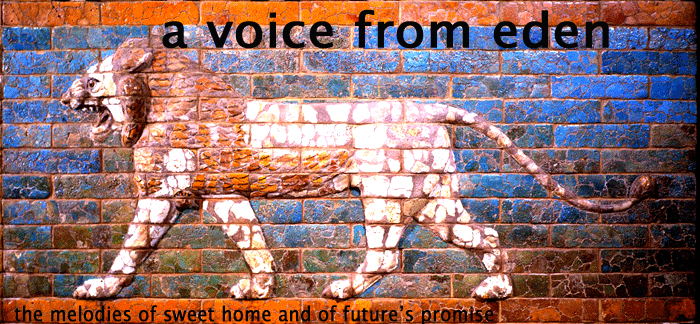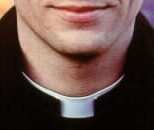Selecting a new pope: Entering the conclave (part 6)
On the morning of the opening of the conclave, the cardinals gather at the Apostolic Palace. Usually they gather at the Sala Regia of the Palace--called the "kingly hall" where the Sistine and Pauline Chapels join in the official rooms of the Apostolic Palace. They would be dressed in choir dress and would proceed by two's into the Pauline Chapel.
Every need will be provided the cardinals in the conclave--they wouldn't need to take with them a retinue of servants, cooks, doctors, valets, or what-not. No one except the cardinals and the designated individuals approved by the Congregation may be present in the conclave.
John Paul in his Apostolic Constitution Universi Dominici Gregis ("On The Vacancy of the Apostolic See and the Election of the Roman Pontiff') wrote new rules and norms on the election of a new pope. He acknowledged the need for privacy and security during the election and therefore designated a recently-built area in the Vatican called the Domus Sanctae Marthae to be the lodging place for the cardinals. This as well as the Sistine Chapel (where all of the voting is to take place) and the areas reserved for liturgical celebrations (such as the Pauline Chapel) are to be the areas where the conclave is to take place and will therefore be closed.
So, as soon as all the cardinals are assembled inside the Chapel, the prefect of the papal household cries out, "extra omnes!" (all out!), ordering anyone who is not authorized to be present at the Pauline and Sistine Chapels to depart. Then the two Chapels and the sealed rooms used by the cardinals are again searched for any breaches of security or privacy (electronic communication gadgets and others of the like). Certain that the place is secure, the papal master of ceremonies and the cardinal chamberlain draw up two documents, each bearing the signatures of the prefect of the papal household, the commandant of the Swiss Guards, and a delegate of the Pontifical Commission for Vatican City State.
Anyone found inside who does not belong or who has entered unauthorized is ipso facto "to be deprived of every honor, rank, office, and ecclesial benefic, or, depending on the condition of the person concerned, subject to appropriate penalties," according to Paul VI's motu propio "On the Vacancy of the Apostolic See."
Then, the Prince Assistant to the Papal Throne, one of the Black Nobles of Rome, seals the external doors from the outside while the prefect of the papal household seals the doors from the inside. To confirm closure, each signals with three taps of a hammer. Except for life-threatening illness no one may leave until a new pope is elected.
The cardinals then take a third oath, pledging secrecy, loyalty to the Holy See, and a pledge that no outside entity, except the Holy Spirit within them, will influence their decision.
The conclave has thus begun.
[Stay tuned for part 7: The first phase--the pre-scrutiny]
Every need will be provided the cardinals in the conclave--they wouldn't need to take with them a retinue of servants, cooks, doctors, valets, or what-not. No one except the cardinals and the designated individuals approved by the Congregation may be present in the conclave.
John Paul in his Apostolic Constitution Universi Dominici Gregis ("On The Vacancy of the Apostolic See and the Election of the Roman Pontiff') wrote new rules and norms on the election of a new pope. He acknowledged the need for privacy and security during the election and therefore designated a recently-built area in the Vatican called the Domus Sanctae Marthae to be the lodging place for the cardinals. This as well as the Sistine Chapel (where all of the voting is to take place) and the areas reserved for liturgical celebrations (such as the Pauline Chapel) are to be the areas where the conclave is to take place and will therefore be closed.
So, as soon as all the cardinals are assembled inside the Chapel, the prefect of the papal household cries out, "extra omnes!" (all out!), ordering anyone who is not authorized to be present at the Pauline and Sistine Chapels to depart. Then the two Chapels and the sealed rooms used by the cardinals are again searched for any breaches of security or privacy (electronic communication gadgets and others of the like). Certain that the place is secure, the papal master of ceremonies and the cardinal chamberlain draw up two documents, each bearing the signatures of the prefect of the papal household, the commandant of the Swiss Guards, and a delegate of the Pontifical Commission for Vatican City State.
Anyone found inside who does not belong or who has entered unauthorized is ipso facto "to be deprived of every honor, rank, office, and ecclesial benefic, or, depending on the condition of the person concerned, subject to appropriate penalties," according to Paul VI's motu propio "On the Vacancy of the Apostolic See."
Then, the Prince Assistant to the Papal Throne, one of the Black Nobles of Rome, seals the external doors from the outside while the prefect of the papal household seals the doors from the inside. To confirm closure, each signals with three taps of a hammer. Except for life-threatening illness no one may leave until a new pope is elected.
The cardinals then take a third oath, pledging secrecy, loyalty to the Holy See, and a pledge that no outside entity, except the Holy Spirit within them, will influence their decision.
The conclave has thus begun.
[Stay tuned for part 7: The first phase--the pre-scrutiny]




<< Home